The subtleties of thuja propagation by cuttings in spring
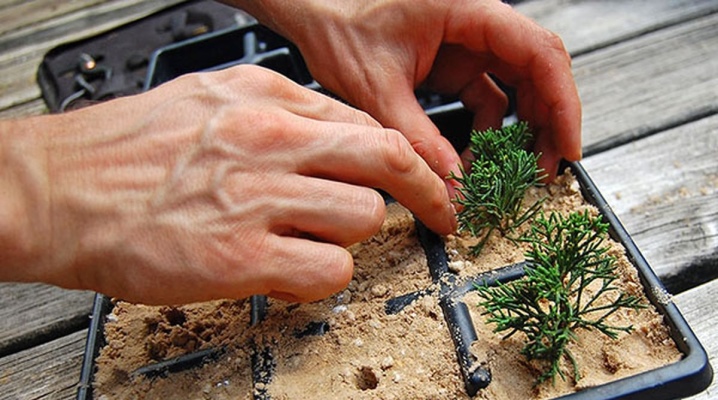
Thuja is a coniferous plant of the cypress family, which today is actively used for landscaping not only parks and squares, but also private household plots. She gained her popularity due to her attractive appearance and ease of care. Thuja can be propagated in several different ways, one of which is spring cuttings.
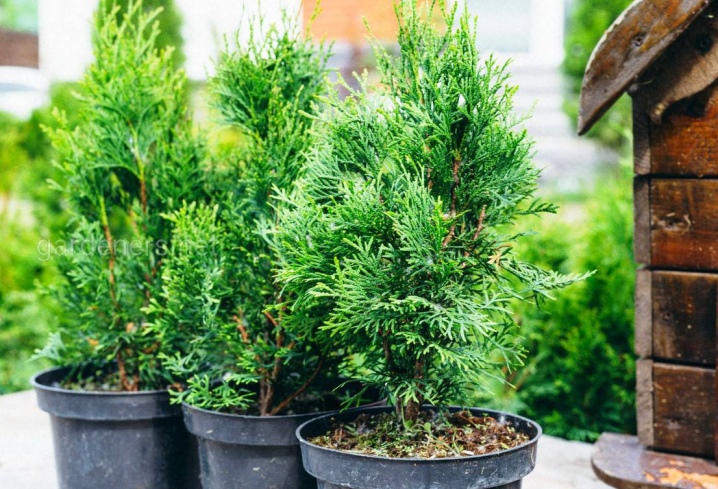
Pros and cons of spring cuttings
Reproduction of thuja in spring with cut branches is not the only option. This procedure can be carried out almost at any time of the year. However, it is this period that is considered the most successful, since in the spring the root system of cuttings is formed much faster and is more powerful, strong and healthy than when rooting in other seasons. This is the main plus. There are several other advantages of spring cuttings.
- Starting from April, the branches will root and develop under the most comfortable natural conditions. This will give you the opportunity to grow a really strong, powerful and beautiful tree.
- It is in the spring that the active vegetation of the plant begins. The movement of the sap in the trunk and branches becomes more intense, and the content of nutrients in it is almost equal to the maximum indicator. Therefore, the shoots for grafting at this time are strong and healthy, and their loss will practically not be reflected on the plant itself.
- By the beginning of winter, spring cuttings are already completely ready for transplantation to a school - a special bed on which they will have to grow for the next few years. This means that by the onset of severe cold weather, thuja branches will be hardened and strong and will easily survive the dangerous season.
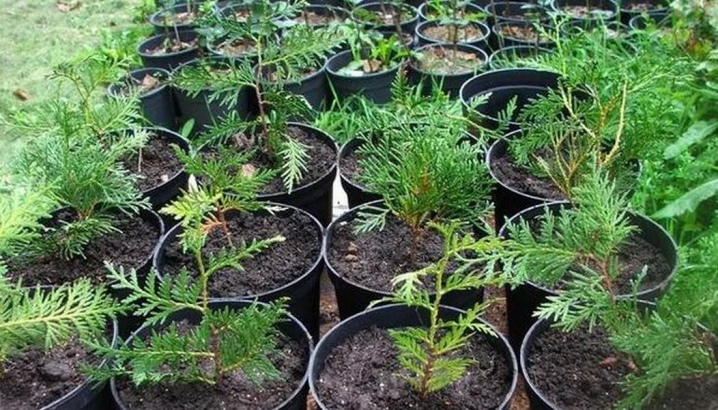
There are no significant disadvantages to spring cuttings of this coniferous plant. The only drawback lies in the fact that it is necessary to spend a lot of time and effort in order to choose a really healthy thuja, the branches of which will become new trees in the future.
Preparing branches
Important in the grafting procedure is not only the choice, but also the correct collection of branches for further manipulations. When taking on this work, you need to remember the following features.
- It is necessary to take branches only from the top of the plant. Lateral shoots are not suitable for future cuttings.
- It is better to collect material in the second decade of April. The mother branch must be over three years old, and its diameter must be at least 5 mm.
- After the branch is ready, its lower part is cleaned 3-5 cm up from the needles and the remnants of the bark.
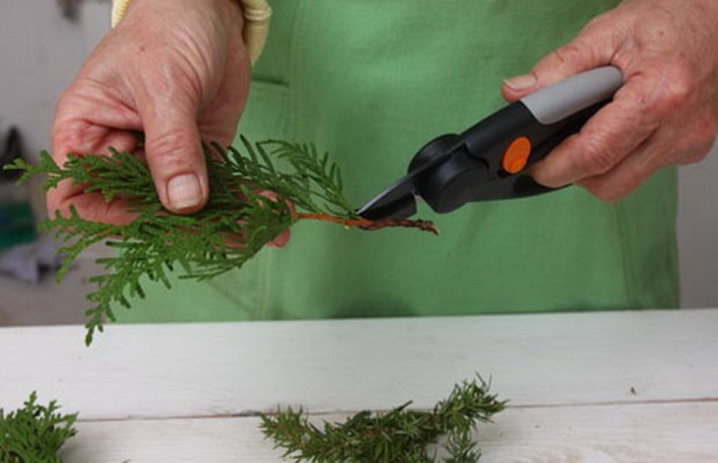
An important point is that you need to graft by hand, that is, the branch from the mother trunk should be torn off. Do not use scissors, knives, pruning shears or other cutting tools. It is necessary to tear off in such a way that a little bark remains at the end of the shoot, the so-called heel. It is its presence that ensures the rapid formation of the root system on the cutting.
It should be borne in mind that only about 70% of all collected material takes root properly and subsequently grows into strong and beautiful thuja. Therefore, cuttings should be collected in larger quantities than it is required to grow trees.
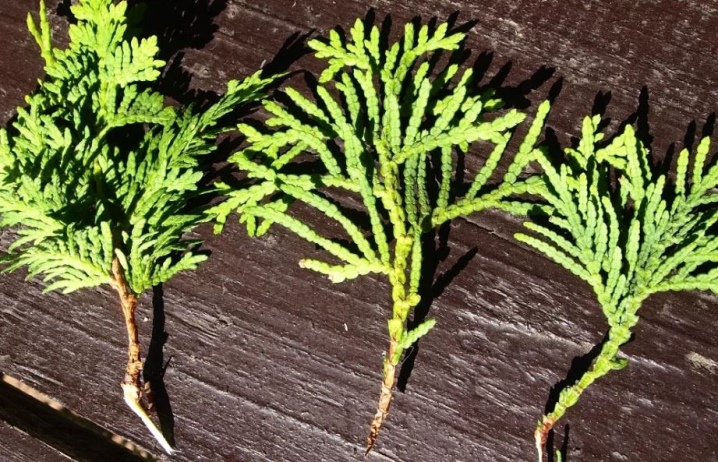
Rooting methods
At home, thuja cuttings can be rooted in several ways, they are all simple and affordable.
- Rooting in a jar of water is the simplest way. It is only necessary to pour clean water into the container and lower the branches of the plant into it so that their lower part is covered with liquid by 3-4 cm.The water in the jar should be changed once a week, and to disinfect it, pour a few potassium permanganate granules. It is important to make sure that some of the branches covered with bark and needles are above the surface. Otherwise, the roots will not form, and the cutting will simply rot.
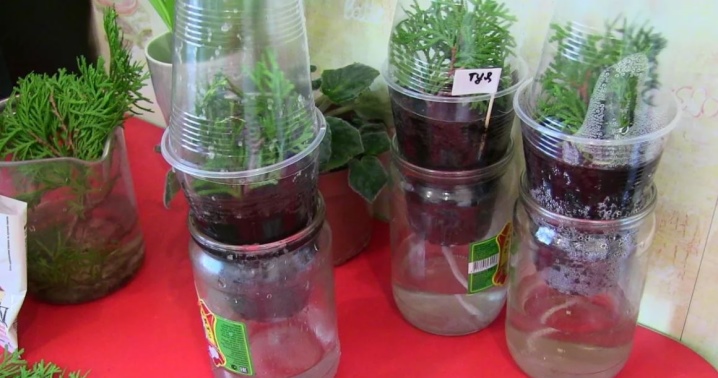
- You can also root branches in the substrate. To do this, you need to prepare containers about 10 cm deep and about 5 cm wide. The volume depends on how many cuttings you need to plant in one container. It is better to use ready-made soil, but you can also take a mixture of equal parts of black soil, peat and river sand. When choosing this option for cutting thuja at home, it is important to ensure that the soil does not dry out, and that the total humidity does not fall below 65%.

- The wick design allows you to perform this procedure as efficiently as possible. On average, up to 90% of all cuttings eventually root successfully. You will need two regular plastic cups with a volume of 200-500 ml. A small hole is made at the bottom of one. Into which a sufficiently thick gauze or bandage wick is inserted. A drainage layer is poured on top, and the rest is filled with a useful substrate. Plant one branch in each container, and cover it with a second glass on top. Now the entire structure must be placed on a container with water so that only the gauze wick is in the water.
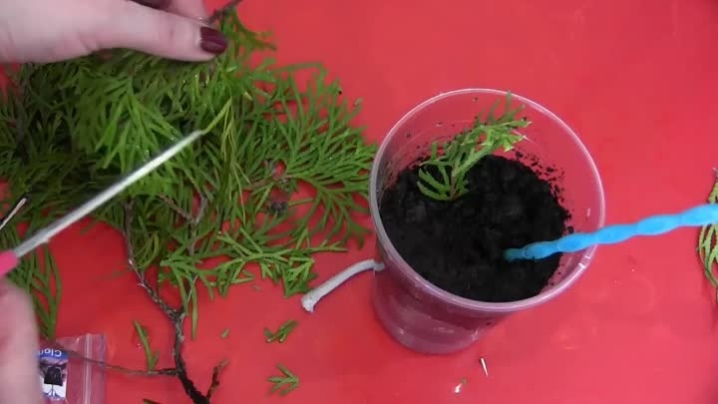
There is nothing complicated in rooting thuja cuttings with your own hands. On average, after about 3-5 weeks, each branch will have its own root system, then you can already start performing further manipulations.
Transplant to open ground
When the roots on the cuttings begin to appear en masse, then it's time to put them in school - a special garden bed in the open field, where the plants will grow for the next 2 or 3 years. Step by step, this operation should be performed as follows:
- the correct choice of the place for the formation of the bed is important, it should be a half-shaded area without a close approach to the surface of groundwater;
- the earth is dug up and either peat in the amount of 10 kg per 1 square meter is introduced into it, or any mineral fertilizer;
- it is necessary to water the rooted cuttings abundantly, but if they were rooting in a jar, then you just need to remove them from the container;
- small depressions are made in the school and cuttings are planted in the resulting pits, sprinkled with soil on top to a height equal to that where the needles and bark were originally cut, the distance between the cuttings is 25-30 cm;
- a new fit must be spilled abundantly.

Within two weeks it will be clearly visible which of the new seedlings have taken root and which have not. If the cuttings begin to wither, the color of their needles has faded, such branches must simply be removed from the garden, leaving only the strongest and strongest plants in the school.
Correct care
Planting thuja cuttings in a school is not the final stage, the cultivation of seedlings under human control continues further. Plant care will be as follows:
- regular watering;
- application of mineral fertilizers once in the off-season;
- the final transplant from the school to a permanent place of growth, when the thuja turns 2-3 years old.
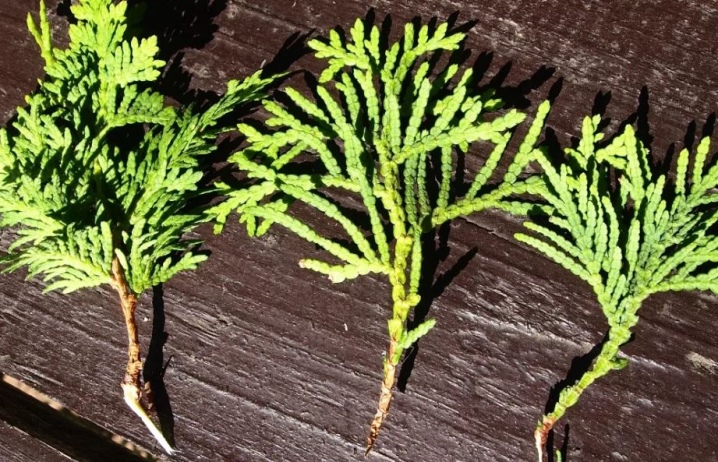
The final place of growth of this coniferous plant should be in a well-lit area in non-swampy soil with an acid reaction. It should be remembered that thuja tolerates well the neighborhood with almost all other plants, however, for normal growth and development, it must be planted at a distance of at least 50 cm from them. In the warm season, it is necessary to prune the tree, shaping it. The final shape depends a lot on the variety. Tui can be elongated, columnar, such as "Brabant", or spherical, similar to bushes, such as "Tini Tim". Be sure to feed the plant at the beginning of the growing season.And for the winter, thuja is always covered, namely, its roots and lower part. It is best to use either spruce branches or a special non-woven covering material.

It is possible to grow thuja from cuttings collected in spring without much hassle if you strictly follow all the described recommendations.
For information on how to propagate thuja cuttings in spring, see the next video.



































































The comment was sent successfully.